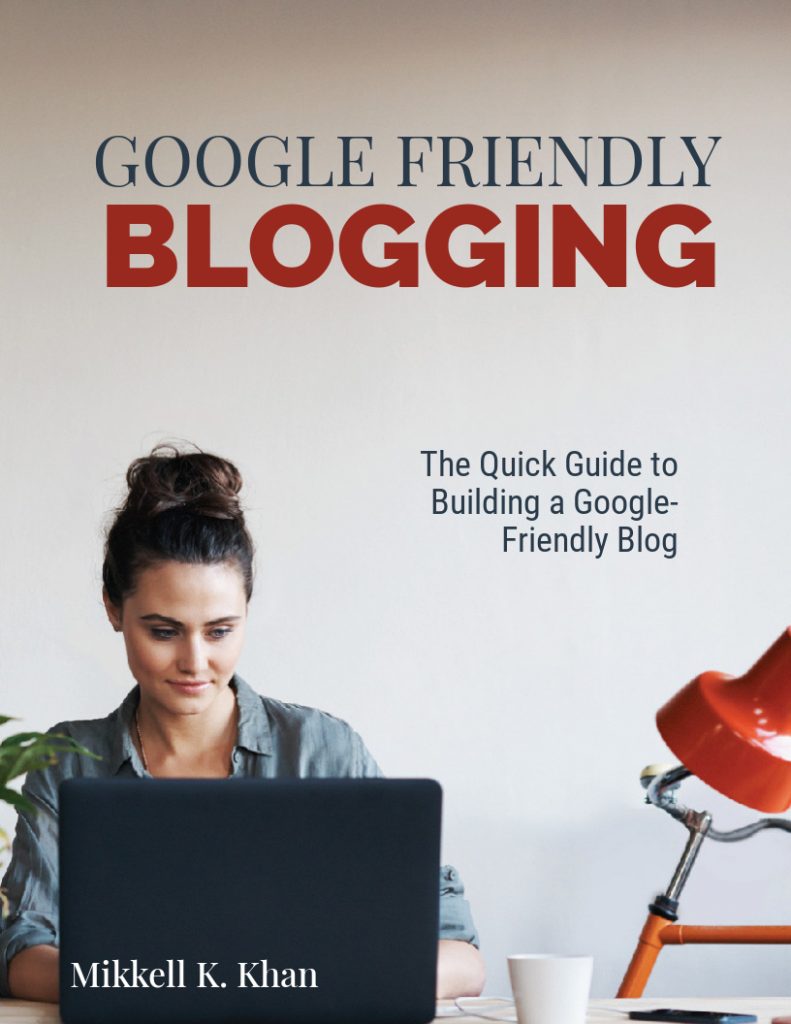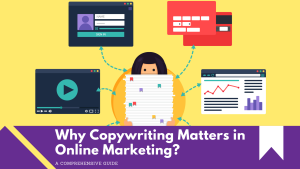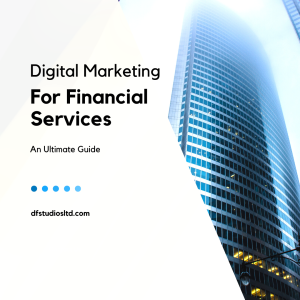Digital marketing for non-profit organizations is the process of using online platforms to achieve marketing and communication goals. It has become an essential tool for non-profits in order to reach new audiences, build relationships with current and potential supporters, and raise funds.
However, it can be difficult to know where to start or what the most effective strategies are. In this guide, we will explore the basics of digital marketing for non-profit organizations and provide tips and advice on how to get the most out of your campaigns.
What Is Digital Marketing for Non-profit Organizations?
Simply put, digital marketing is the use of electronic media to achieve marketing and communication goals. This includes everything from websites and email campaigns to social media and mobile apps.
Digital marketing for non-profit organizations is a subset of digital marketing that focuses on using online platforms to achieve marketing and communication goals for non-profit organizations.
Benefits of Digital Marketing for Non-profit Organizations
There are many benefits to using digital marketing for non-profit organizations, including:
Attracts Funding
Digital marketing is a powerful tool for non-profit organizations to attract funding from donors. By creating a strong online presence and using effective digital marketing strategies, non-profits can reach more potential donors and connect with them in meaningful ways.
In addition, social media platforms allow non-profits to share their stories and mission with a broader audience, building trust and support among potential donors.
Raises Awareness
A key to the success of any non-profit organization is raising awareness about its work and mission. Successful nonprofit digital strategy can play a major role in this effort, reaching more people than traditional marketing methods ever could.
Digital marketing channels are also far more engaging than traditional advertising, allowing potential donors to learn more about the work of non-profits quickly and easily. This raises awareness and builds support for the work of non-profit organizations, helping them make a more enormous impact in the world.
Connects With Younger Audiences
Non-profit organizations face a unique challenge in reaching younger generations. Many people in this age group are not as engaged with traditional forms of media, such as TV and newspapers. They are more likely to be reached through social media channels.
Digital marketing can help connect non-profit organizations with younger people in relevant ways, helping them build the support they need for their work. This is an important step in securing the future of non-profit organizations and the positive impact they have on our world.
Builds Long-term Donor Memberships
Re-targeting online ads for past donors is an effective way to convert them into long-term donor members.
Non-profit organizations can create a sequence of re-targeted ads that will follow a past donor for up to 180 days. This will keep your non-profit top of mind and increase the chances of donating again in the future.
Brings in New People Power
Sponsored posts are a great way to bring in new people’s power for your non-profit organization.
When you partner with a company that shares your values, you can create sponsored social media posts to reach a new audience of potential donors. This is a great way to grow your donor base and support the work of your non-profit.
Builds Credibility
Trust is essential for any non-profit organization. Using digital marketing channels effectively, non-profits can build credibility among potential donors and supporters.
Digital marketing allows organizations to share their stories in powerful and engaging ways, helping people understand their work and why it is important. This builds trust and support for non-profit organizations, helping them make a bigger impact in the world.
Increased Reach
With a well-executed digital marketing campaign, you can reach a much larger audience than you would through traditional methods such as print advertising or broadcast media.
Greater Engagement
Digital media allows you to engage with your audience more interactively, providing a richer experience that can encourage loyalty and support.
Greater Flexibility
Digital marketing allows you to tailor your messages to specific demographics, making the most use of improved technology.
How to Create a Nonprofit Marketing Plan
Define Your Marketing Goals
The first step in creating a successful marketing plan for your non-profit is to define your goals. What do you hope to achieve with your digital marketing efforts?
Are you looking to increase awareness of your organization, connect with younger audiences, or build trust and support among potential donors? Once you have a clear idea of what you want to achieve, you can develop tactics that will help you reach your goals.
The most frequent goals for non-profit marketing are to:
- Increase brand awareness
- Attract new donors
- Increase volunteer engagement
- Grow social media followers
- Increase online donations
Understand Your Audiences
Once you have defined your goals, you need to understand your target audiences. Who are you trying to reach with your marketing messages?
What are their interests and concerns? What kind of content is most likely to engage them? Knowing your audience will help you create content and messaging that resonates with them and encourages them to take action.
For example, if you are looking to attract new donors, you might focus on creating content that is interesting and relevant to young people. If your goal is to increase volunteer engagement, you might create content that showcases the impact of volunteers’ work.
Craft Your Key Messages
Once you know your target audiences and what you want to achieve, you need to craft your key messages. What are the most important things you want people to know about your organization?
What makes you unique from other non-profits? What is the impact of your work? Crafting powerful and memorable key messages will help you stand out from the competition and encourage people to take action.
An example message for a non-profit might be:
- We are the only organization in our community that provides this service.
- Our work helps people in need and makes a difference in their lives.
- Your donation will help us continue our work and make a difference in even more lives.
Choose, Plan, and Create Your Marketing Strategies
Once you have your key messages, it’s time to choose the marketing strategies that will work best for you. Will you focus on online advertising, social media, email marketing, or something else?
Decide which tactics you want to use, and how you want to use them. For example, if you want to increase brand awareness, you might invest in online advertising. If you want to connect with potential donors, you might want to focus on email marketing.
Once you have chosen your strategies, it’s important to plan them out carefully. Create a timeline and budget for your campaign, and make sure you allocate the resources you need to be successful.
Analyze Your Marketing Performance
Measuring the performance of your marketing campaigns is essential for improving your results. By tracking the number of people who engage with your content, donate to your organization, or volunteer their time, you can see what tactics are working and which one’s need improvement.
This information can help you make adjustments to your marketing plan as needed, so you can continue to achieve your goals.
Best Marketing Strategies for Non-profit Organizations
Now that you know what goes into creating a successful marketing plan for your non-profit, it’s time to put it into action. Here are some of the best marketing strategies to get you started:
Event Marketing
Event marketing is a great way to connect with potential donors and volunteers. Hosting an event can help you raise awareness of your organization and encourage people to take action.
You can host many types of events, from galas and luncheons to fundraising concerts or 5K races. When planning your event, make sure you create a marketing plan to promote it.
Your digital marketing strategy should include a mix of tactics, such as online advertising, social media promotion, email marketing, and print advertising. Make sure you allocate the resources you need to succeed in your event.
Online Advertising
Online advertising is a great way to reach potential donors and volunteers who are not already familiar with your organization. There are different types of online advertising, from search engine marketing to display advertising and social media advertising.
When choosing which types of online advertising to use, make sure you consider your target audience. For example, if you want to reach young people, you might invest in social media advertising. If you’re going to reach people who are already interested in your cause, invest in search engine marketing.
Video Marketing
Video marketing is a great way to reach potential donors and volunteers who are not already familiar with your organization. Videos can promote your work, share success stories, or show how people can get involved.
When creating your video, make sure it is interesting and has evidence that you are the most credible source.
Intuitive Website Design
A well-designed website is essential for any non-profit organization. Your website should be easy to navigate, and the design should be professional and engaging.
Make sure your website is optimized for search engines so people can easily find it. You should also include a blog to help you keep people updated on your work.
Public Speaking
Public speaking is a great way to connect with potential donors and volunteers. When you speak in public, you share your organization’s story and explain how people can get involved.
Digital Marketing Trends for Non-profit Organizations
Digital marketing is constantly growing, and non-profit organizations need to stay up-to-date on the latest trends. Here are some of the most important digital marketing trends for a nonprofit organization in 2022:
Quality and Consistent Content Will Be Crucial
In order to engage customers and stand out from the competition, non-profit organizations will need to produce high-quality, consistent content. This content must be relevant to donors and provide value if you want them to stick around.
Additionally, this content must be easily accessible across all channels, including the website, blog, social media, and email.
Adhere to New Technology Trends
Non-profit organizations must embrace new technology in order to stay ahead of the curve. This includes technologies such as blockchain, which revolutionize the way financial transactions are conducted.
Prioritize Your Email Campaigns
Email campaigns are still one of the most effective ways to reach real donors. In order to make the most of them, non-profit organizations need to develop targeted campaigns that appeal to specific donor segments. Also, it’s important to personalize emails as much as possible in order to increase engagement rates.
Upgrade Your CRM
A CRM (customer relationship management) system is essential for tracking donor interactions and data. In order to provide the best customer experience, nonprofit organizations need to upgrade their CRM systems to cloud-based ones. This will allow them to access customer data from anywhere and anytime.
Embrace Facebook & Instagram Charitable Giving Tools
Facebook and Instagram have both developed digital marketing tools specifically for charitable giving. Non-profit organizations should take advantage of these tools in order to increase donations from social media platforms.
Wrap Up!
After reading the above content, you may have learned that digital marketing for non-profits is a complex process. You’ll need to create campaign emails and videos, design your website with search engine optimization (SEO) in mind, and make public appearances when possible.
However, if you can tap into how your customer’s brains work at different stages of the purchasing process or lead funnel, you may drive more sales with less effort!
So there you have it! The basics of digital marketing for non-profit organizations. We hope this guide has been helpful and given you some ideas on how to get started. If you need assistance with your campaigns or want more information on a specific topic, don’t hesitate to contact us. We’re here to help! Thanks for reading and happy marketing!






